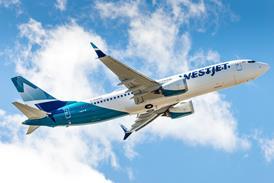Aircraft repair technology using laser generated images projected directly into the eye could soon be available
Graham Warwick/WASHINGTON DC
The days of oily-fingered aircraft mechanics thumbing through dog-eared technical manuals may be numbered. Soon maintainers with computers on their belts will be able to call up repair instructions on head-mounted displays and order replacement parts by voice command as they work.

Such technology is already being used on automotive production lines and service centres, and is being experimented with on aircraft production lines. Now the maintenance industry is getting a taste of the latest in wearable computer and display technology.
Last August, US firms Microvision and Command Technology (CTI) announced a partnership to market "mobile visualisation systems" for maintenance, repair and overhaul. The tie-up brings together CTI's web-based information delivery and e-commerce system with Microvision's retinal-scanning display technology to provide highly mobile and hands-free access to maintenance data whether troubleshooting an aircraft on the flight line or disassembling an engine in the overhaul shop.
Trials of the combination are planned for later this year at Acro Aerospace, a helicopter repair centre in Richmond, British Columbia, Canada and at the USAir Force's Ogden Air Logistics centre at Hill AFB, Utah. At Acro, CTI's software and Microvision's display will be used during overhaul of Rolls-Royce 250 turboshafts. At Hill, the system will used for line and shop maintenance of combat aircraft.
Bothell, Washington-based Microvision is a four-year-old company with a patented technology for projecting electronic images directly into the eye. The system scans a low-power, eye-safe laser across the retina to build up an image which appears as a full-size computer monitor floating at about arm's length.

The advantages claimed by Microvision for its retinal scanning display are that the imagery is readable in bright sunlight, has good contrast and high resolution, and is transparent - allowing wearers to see what they are working on and to work hands free.
The company's first production head-worn display, the Nomad, is monocular, monochrome and will be available in September. The display, which can be positioned in front of either eye, is connected to a Xybernaut wearable, wireless and voice-activated computer which generates the text and graphics.
Groton, Connecticut-based CTI brings to the combination software tools which convert technical documentation into interactive online displays, says business development director Bruce Conn. A maintenance manual can be converted into a database built around the parts and their associations, linking each part with any related documentation, such as repair schemes and service bulletins.

The mechanic accesses the database via the internet to call up maintenance and repair information, check inventory and even order parts electronically - without turning away from the task in hand. Display graphics are "built on the fly" from the database. Voice activation allows the user to request information on a part or "put it in his shopping cart", says Conn. "He can query the local inventory to see if the part is available. If not, he can order it or pass it to purchasing."
Current applications send the information to desktop or laptop computers via a local area network and these are now being extended to wearable, wireless computers, driving hand-held tablets or head-worn optical displays - or even a display which could be Velcroed to the mechanic's vest and which he would put on, look through then take off.
Conn says CTI is developing so-called "thin-client" wireless software which allows a relatively small belt-worn computer to download information from the server as and when it is needed. This could allow a mechanic to walk down a flight line of different aircraft types and pull up information on each as necessary.
Source: Flight International























